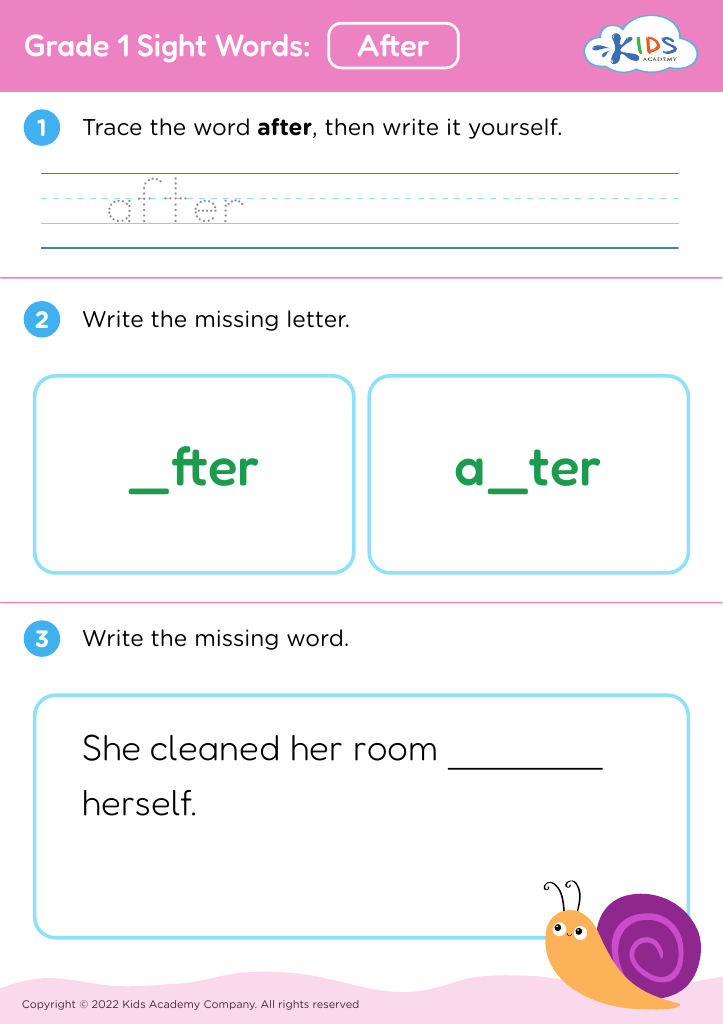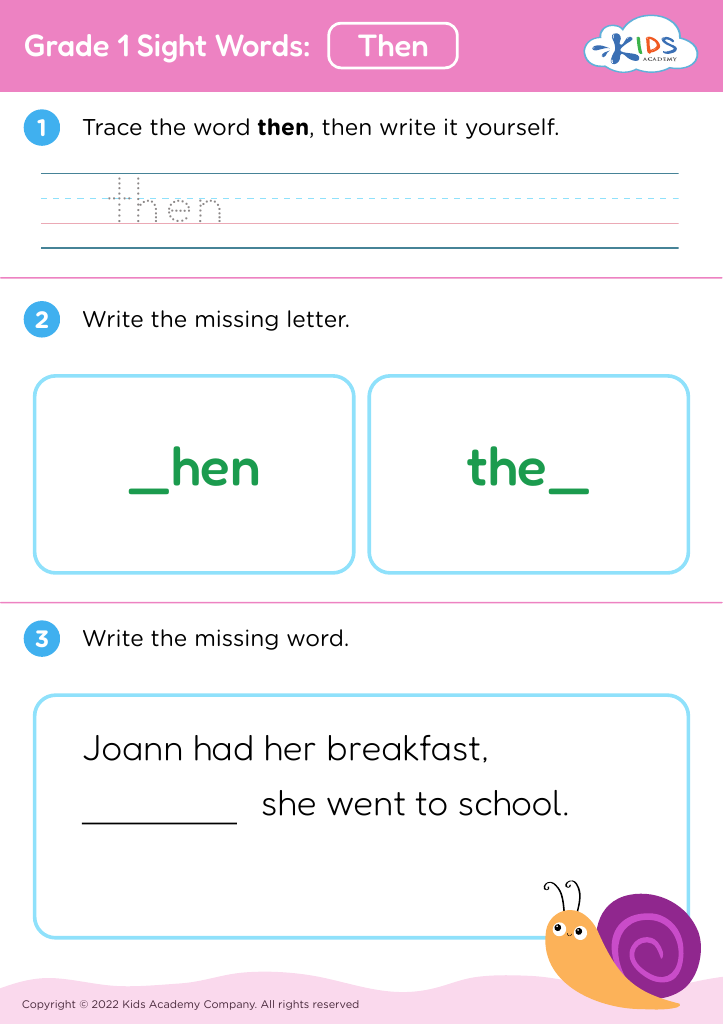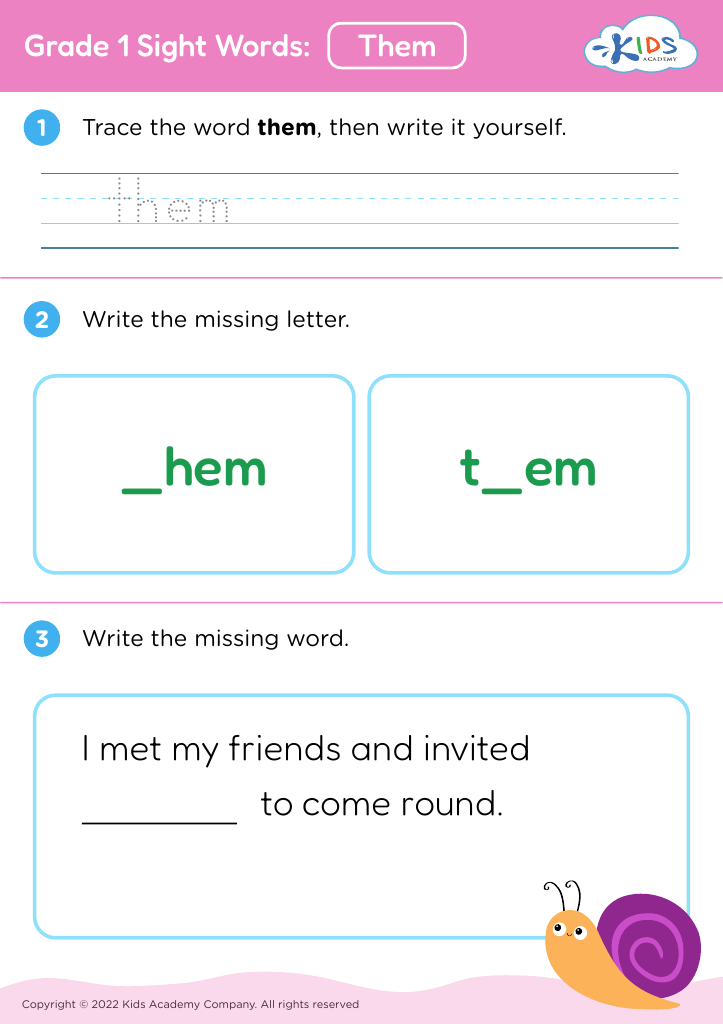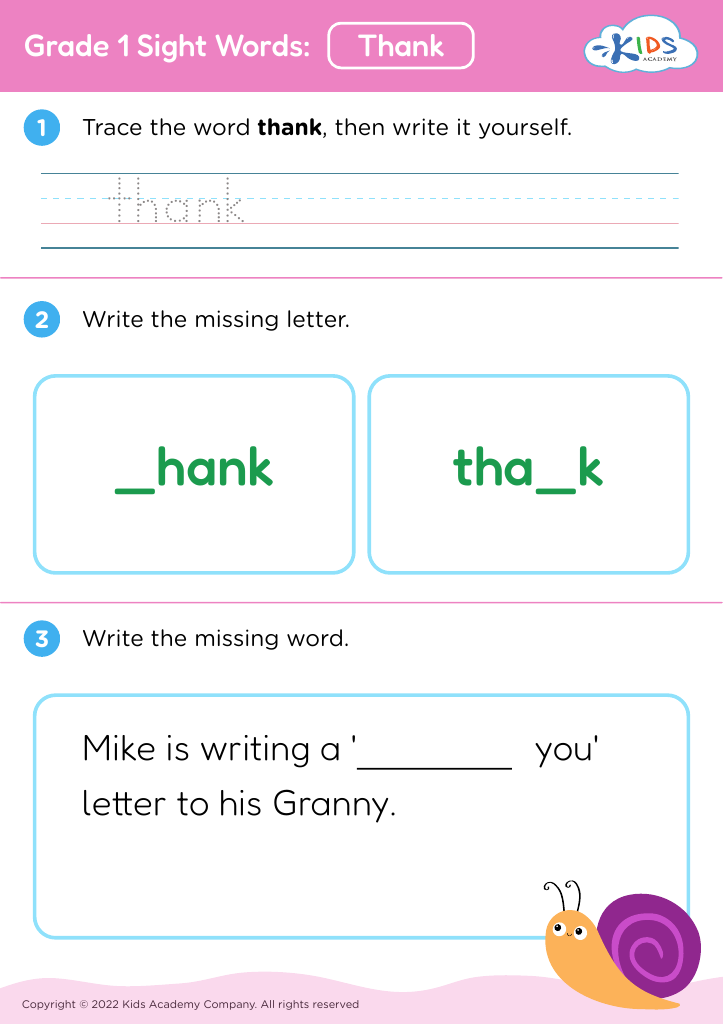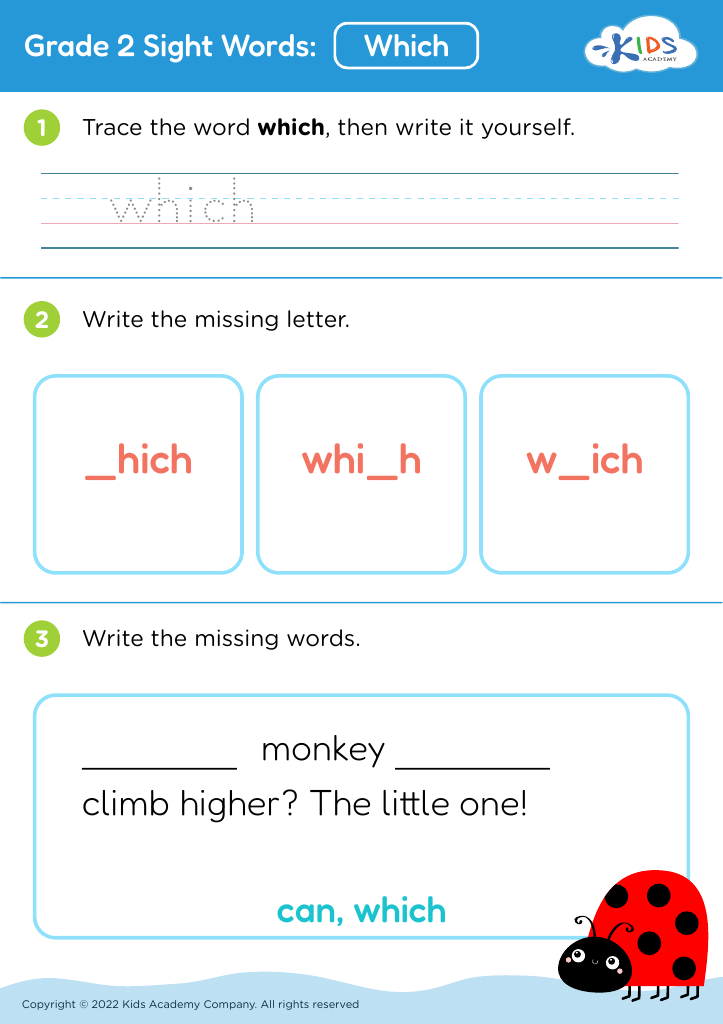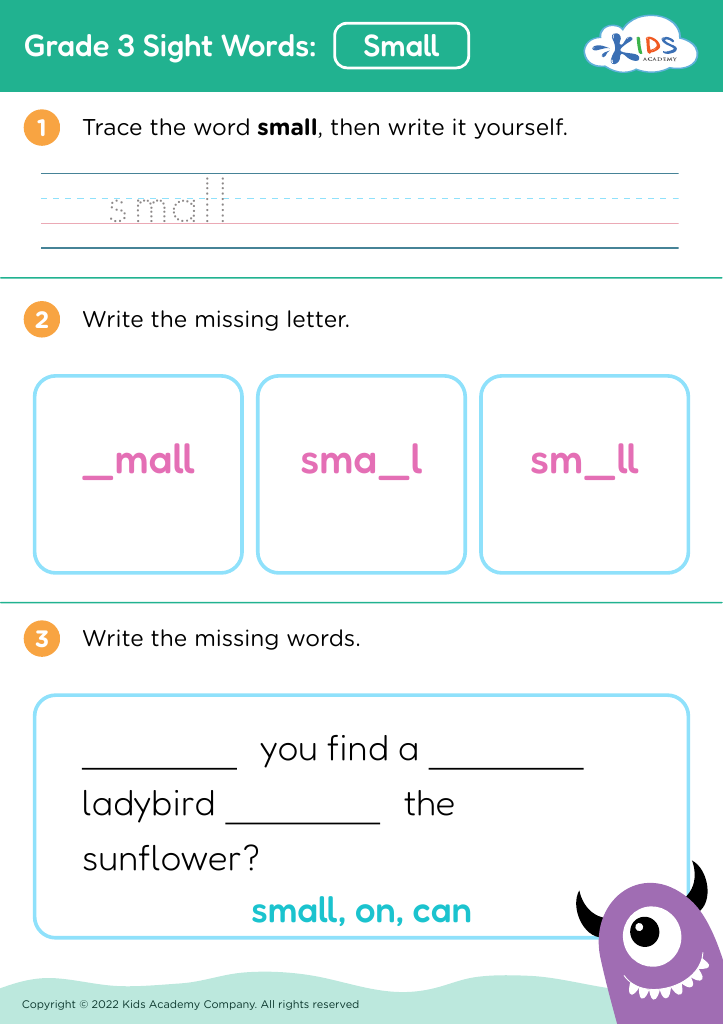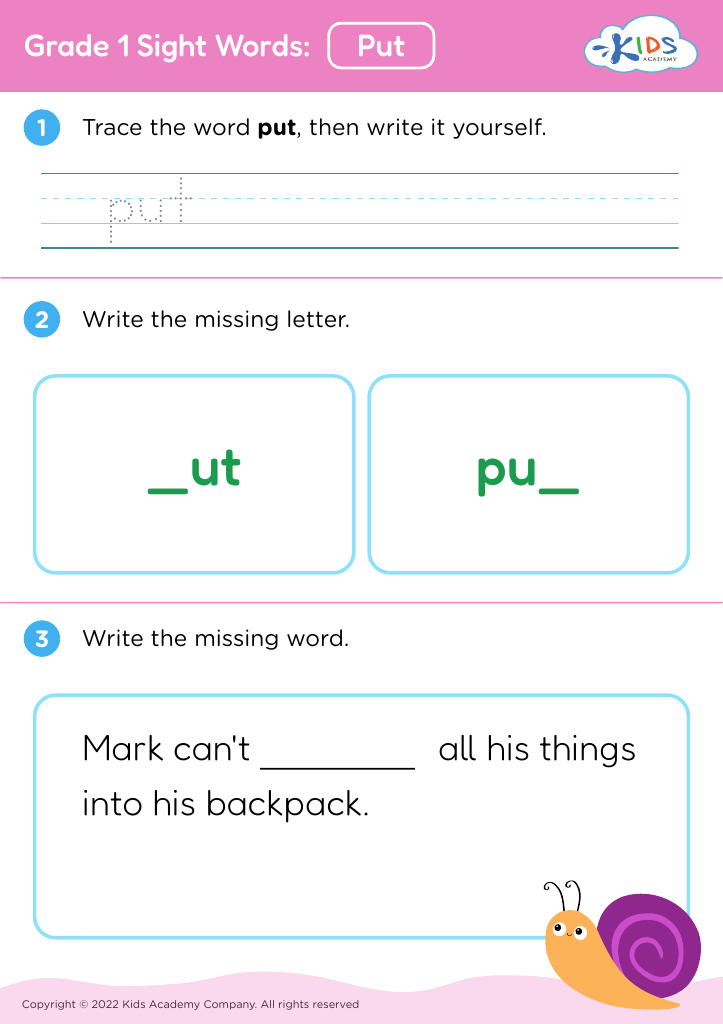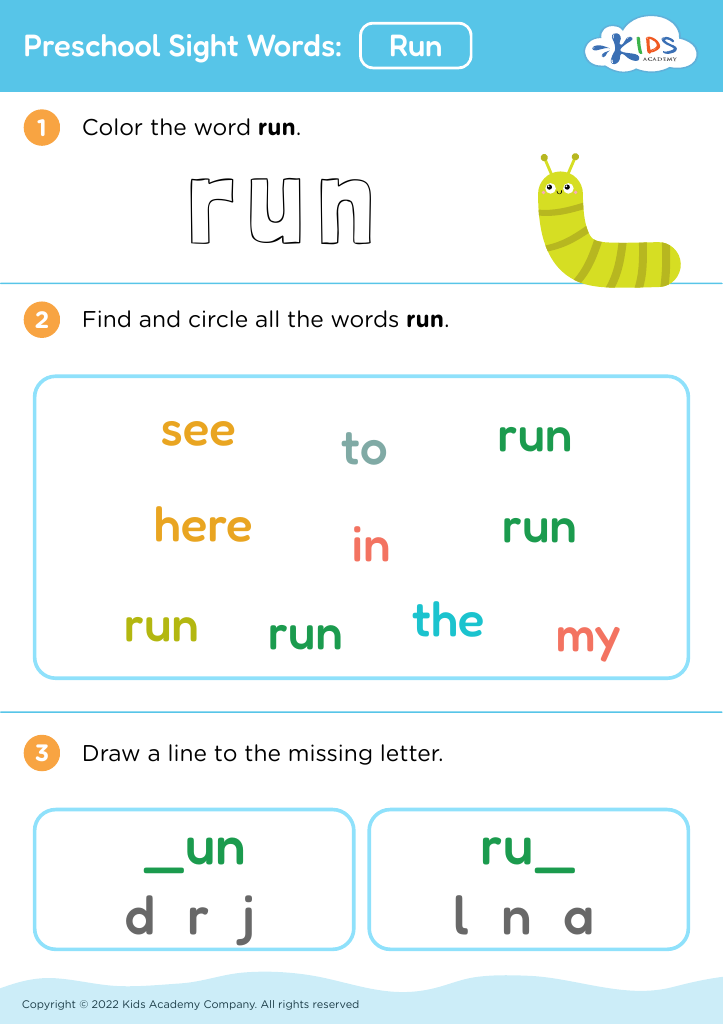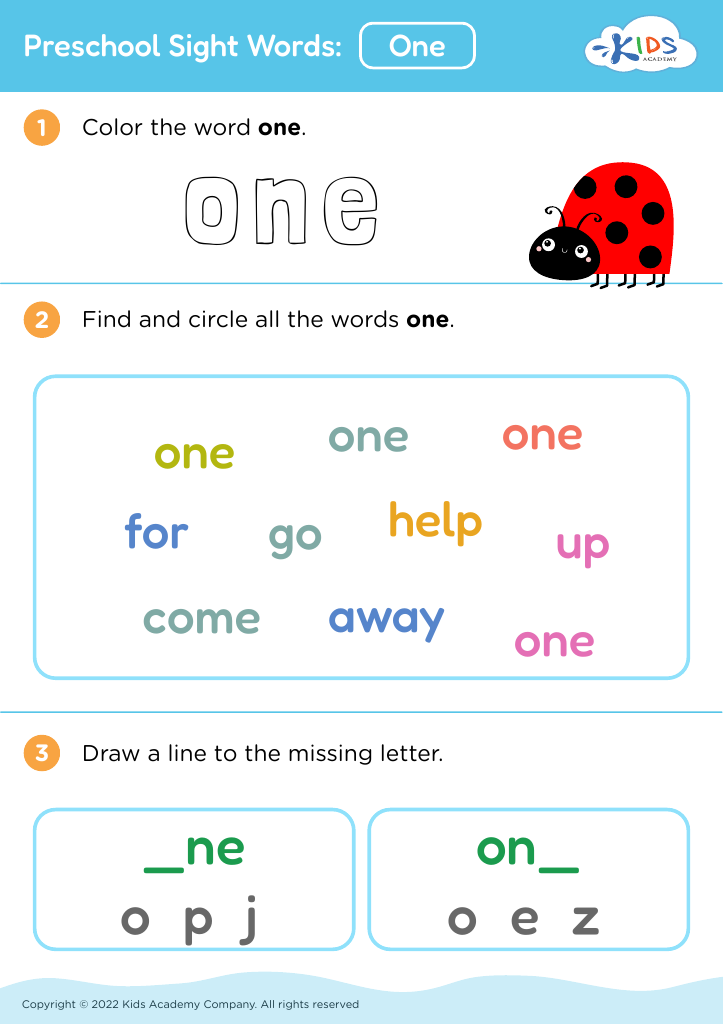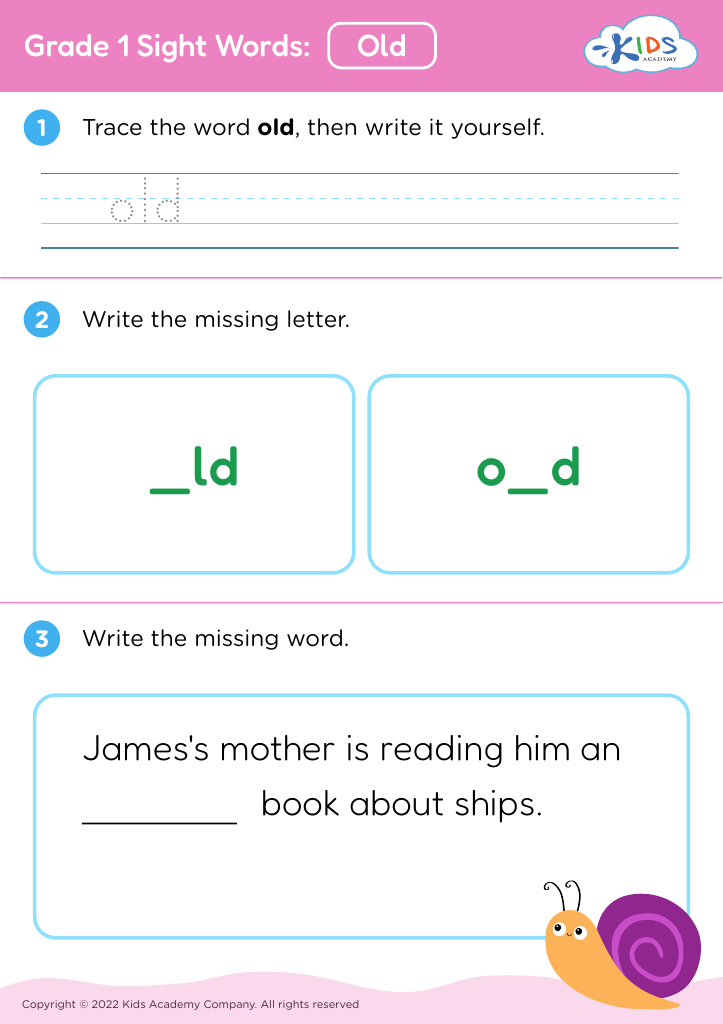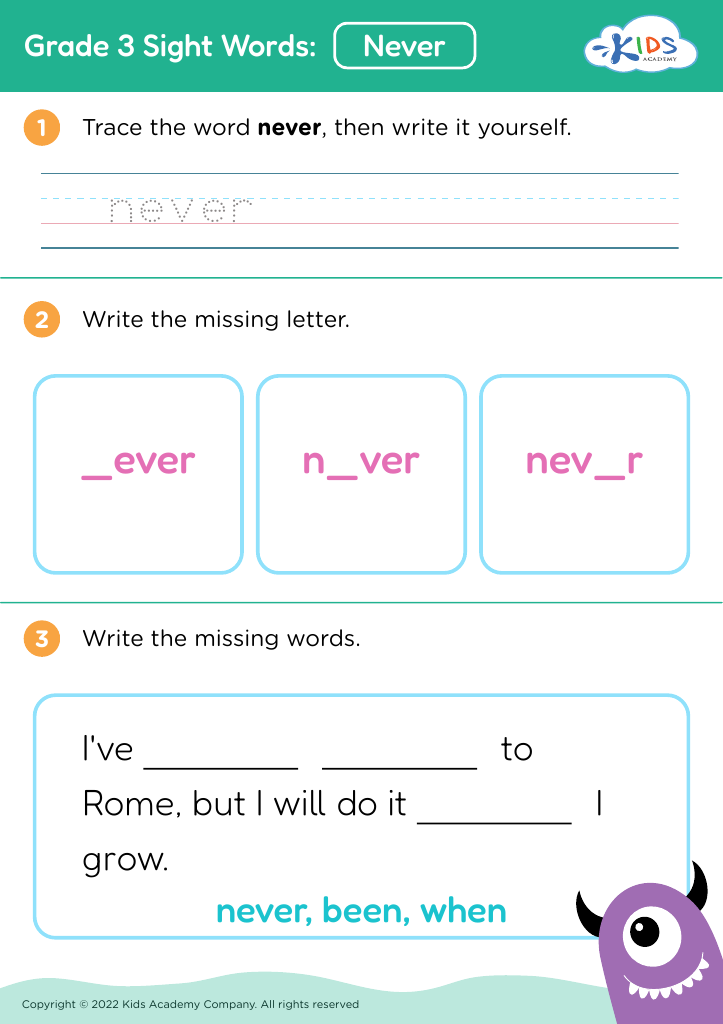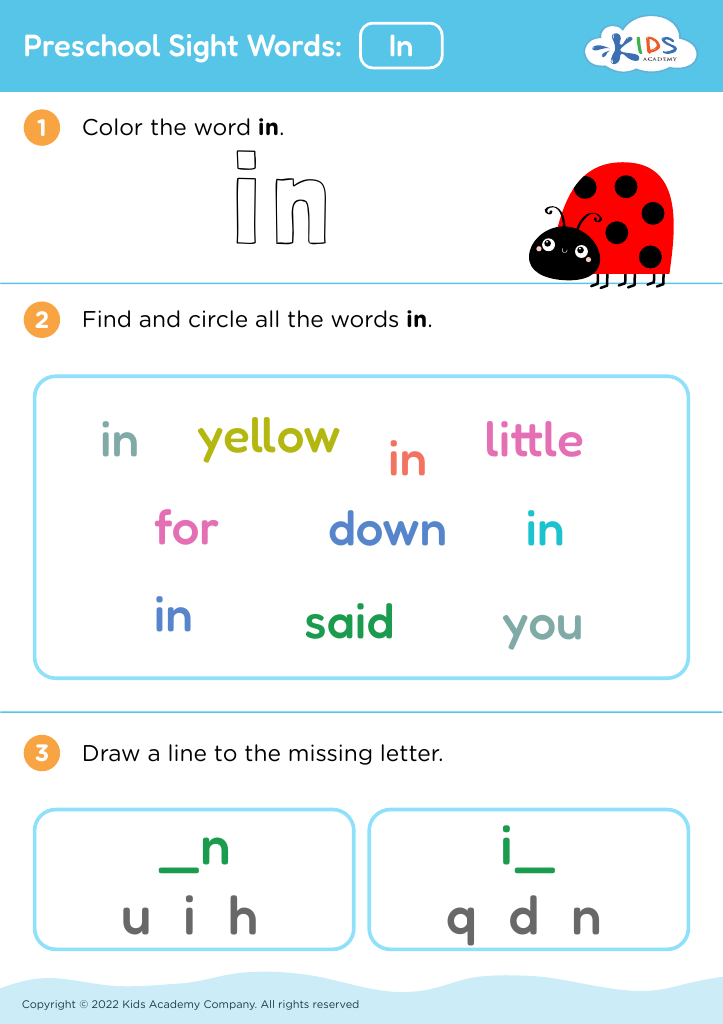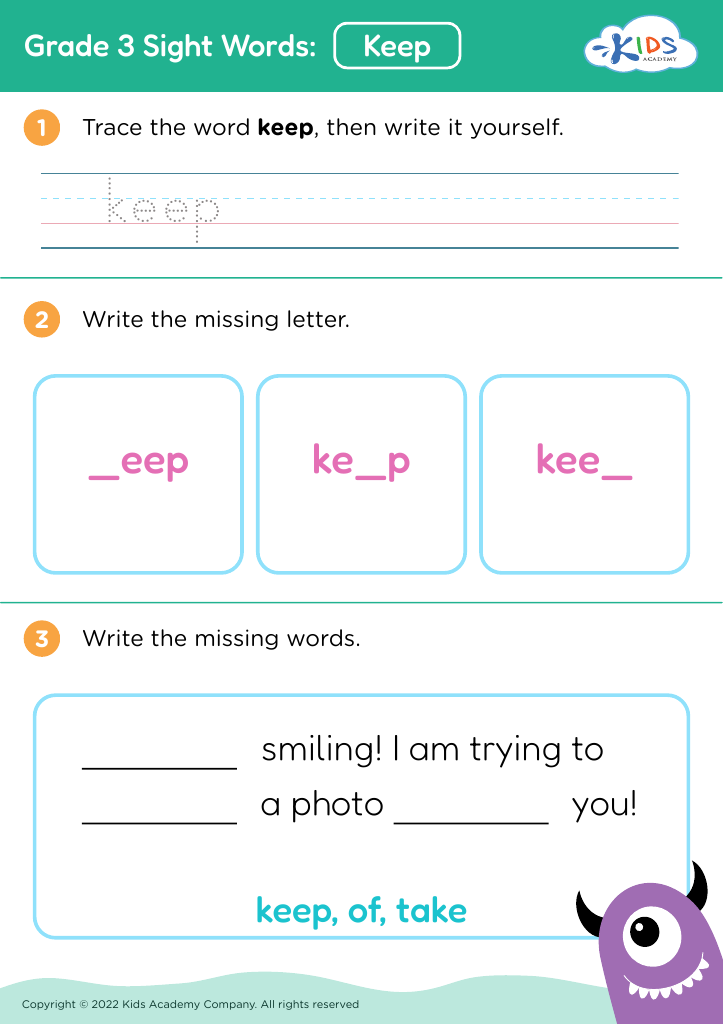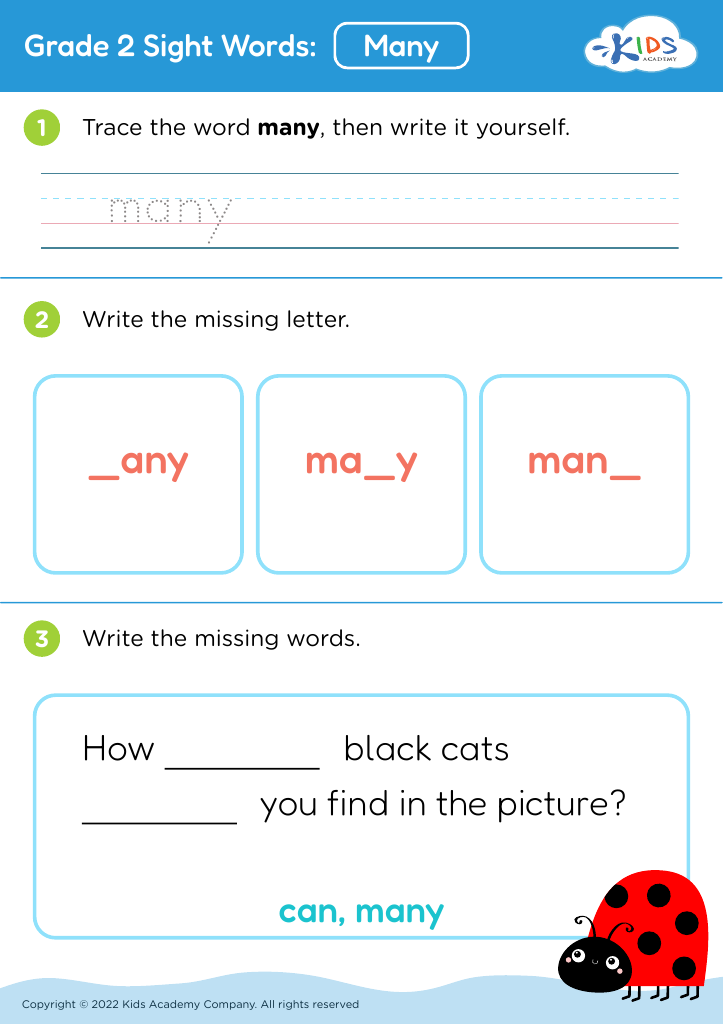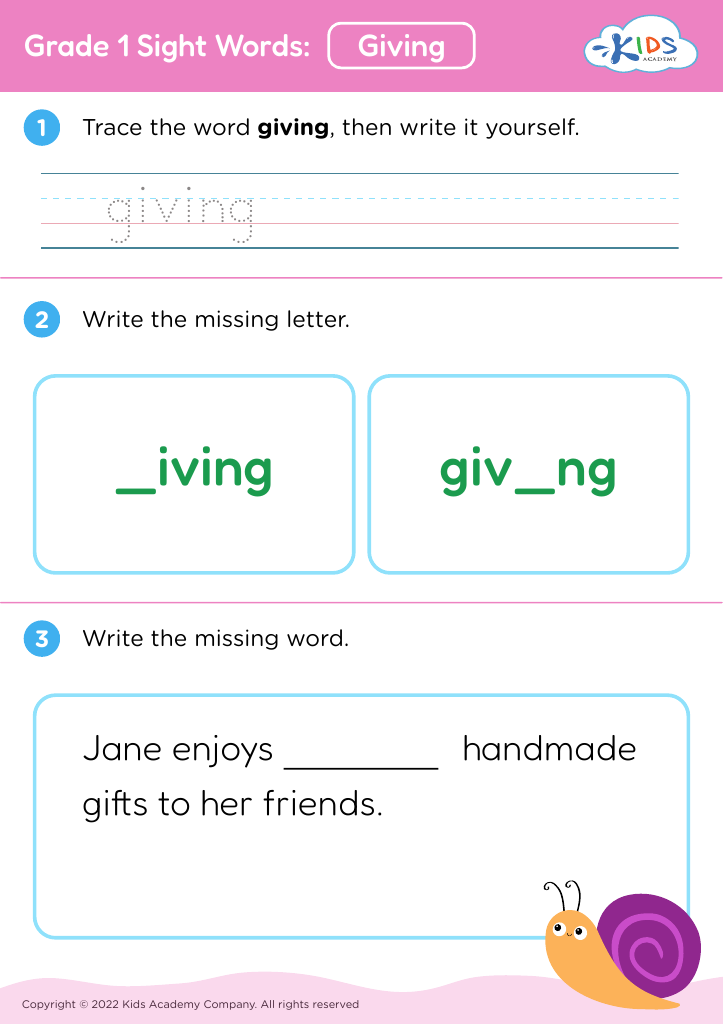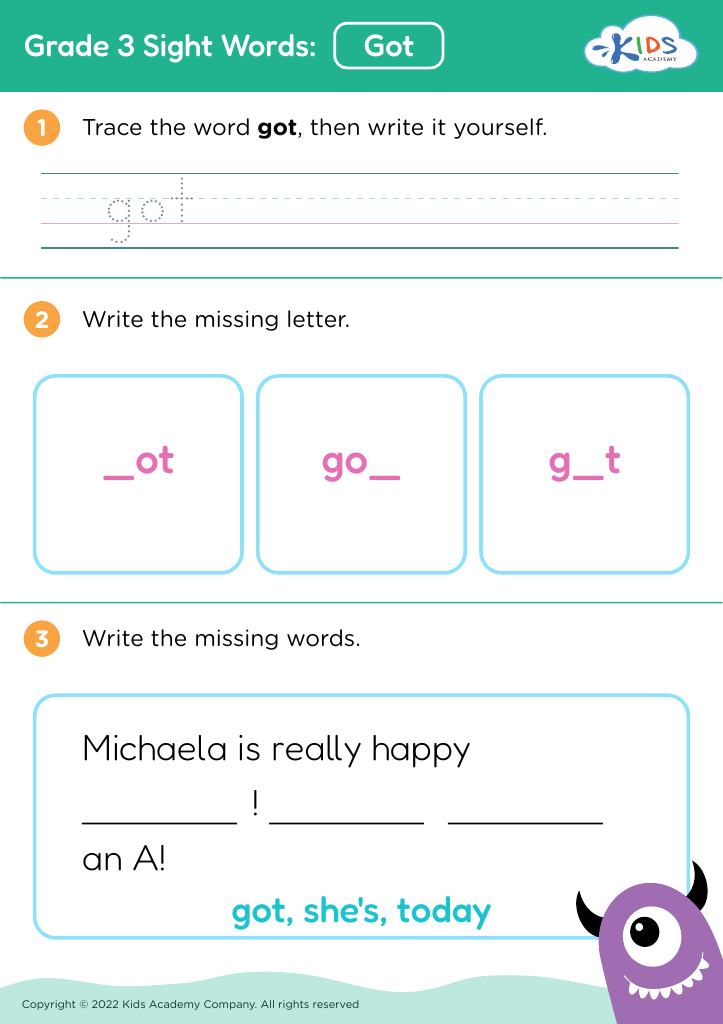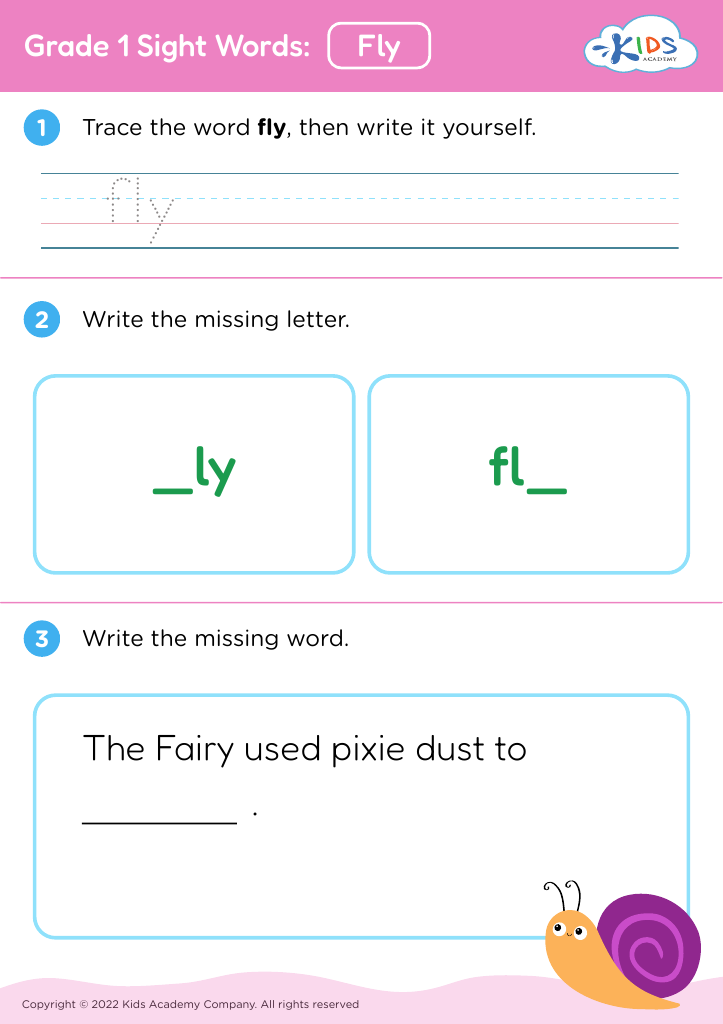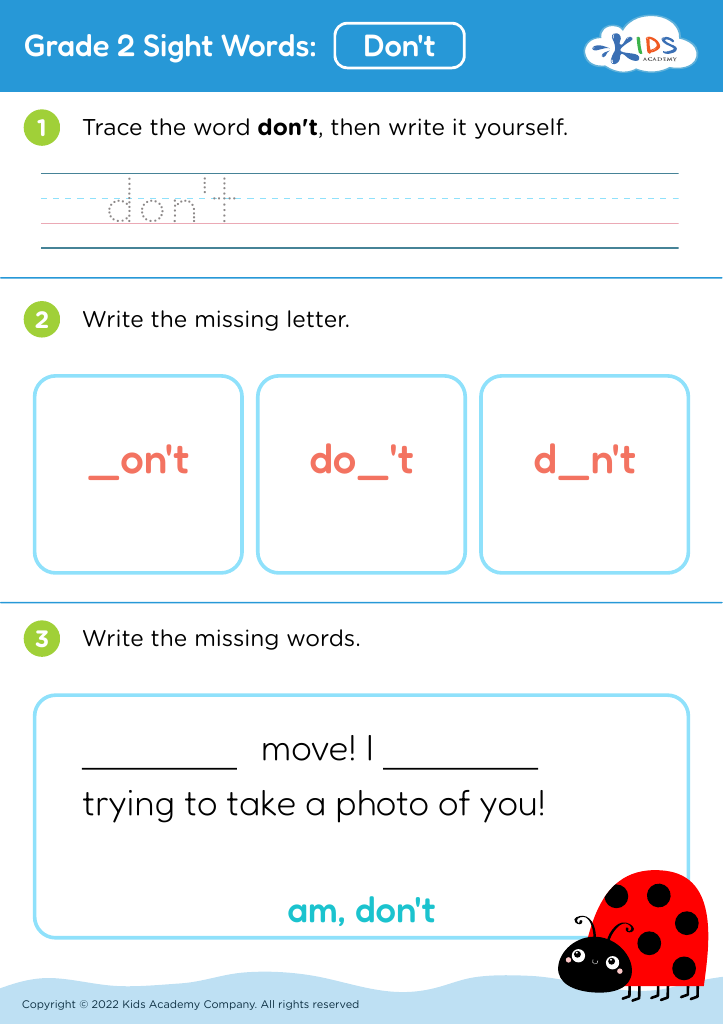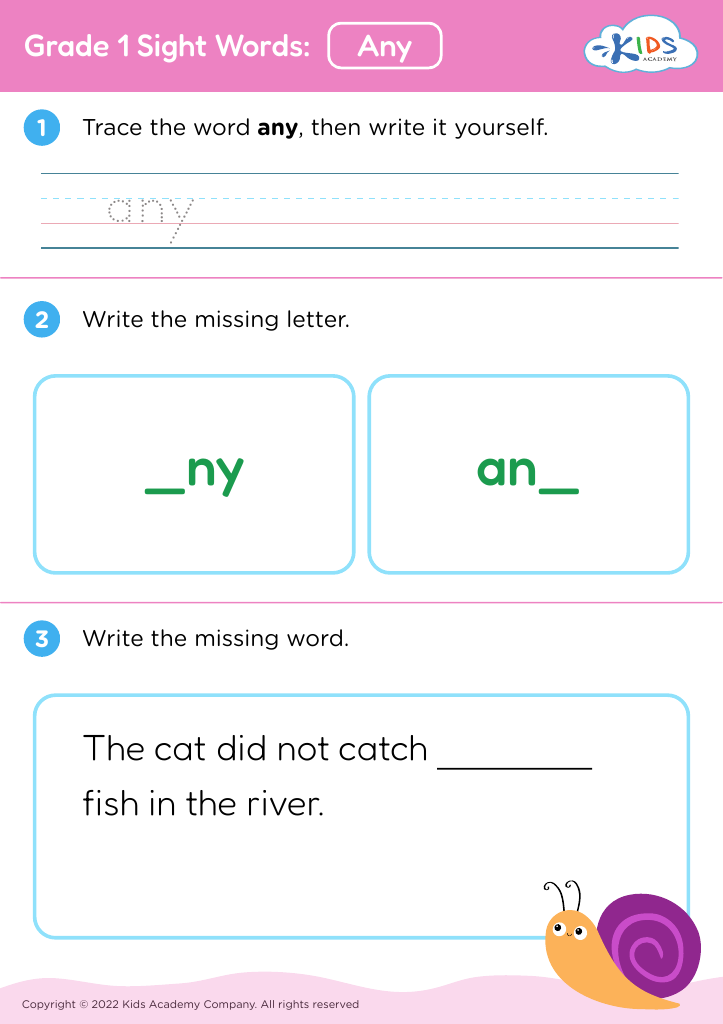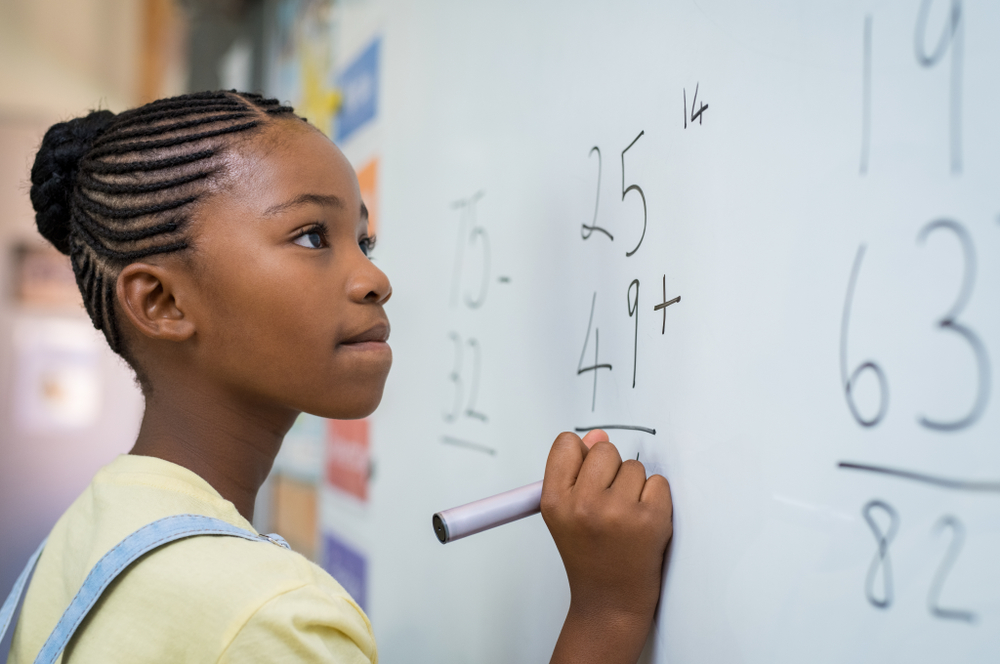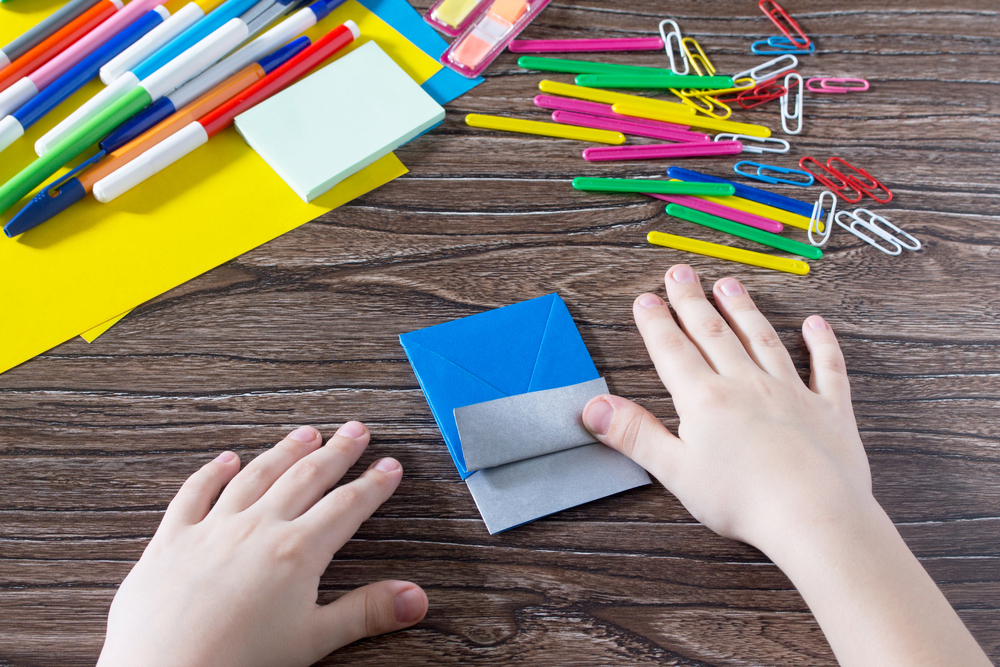Comparing Fractions Reading Worksheets for Ages 4-8
37 filtered results
-
From - To
Introduce your young learners to the exciting world of fractions with our "Comparing Fractions Reading Worksheets," designed specifically for ages 4-8. These worksheets provide engaging activities that help children understand the concept of fractions through comparisons. By using visual aids and fun exercises, kids enhance their reading and critical thinking skills while learning to identify which fractions are larger or smaller. Perfect for homeschooling or classroom use, our resources cater to various learning styles, inspiring confidence and mastery in mathematics. Start your child's educational journey today with our comprehensive, age-appropriate materials that make learning about fractions enjoyable and effective!
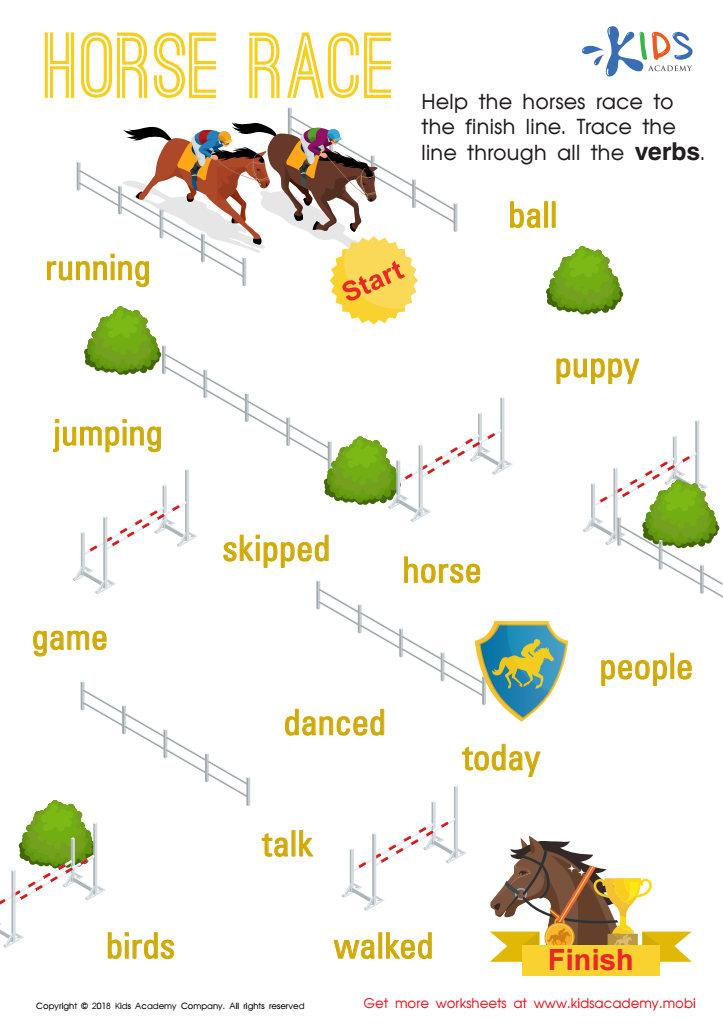

Horse Race Worksheet
Comparing fractions is a foundational skill that supports children's overall mathematical understanding, making it crucial for parents and teachers to focus on this topic for ages 4-8. During these formative years, children are building their number sense and developing the ability to think critically about numbers and relationships. By engaging with comparing fractions, children learn to recognize patterns, understand size relationships, and foster logical reasoning.
Additionally, engaging with comparing fractions introduces essential vocabulary and concepts, such as greater than, less than, and equal to. This early exposure encourages mathematical discourse among children, promoting communication skills and collaborative learning. Furthermore, developing an understanding of fractions can boost confidence as children gain the ability to solve real-world problems involving sharing and division, which they encounter in daily life contexts.
Parents and teachers can use visual aids, interactive games, and hands-on activities to make learning engaging. As children grasp the concept of comparing fractions, they build a solid mathematical foundation that will benefit them as they progress in their education. Investing time and resources in this topic ensures students are well-prepared for future challenges in mathematics and enhances their critical thinking abilities.
 Assign to My Students
Assign to My Students

